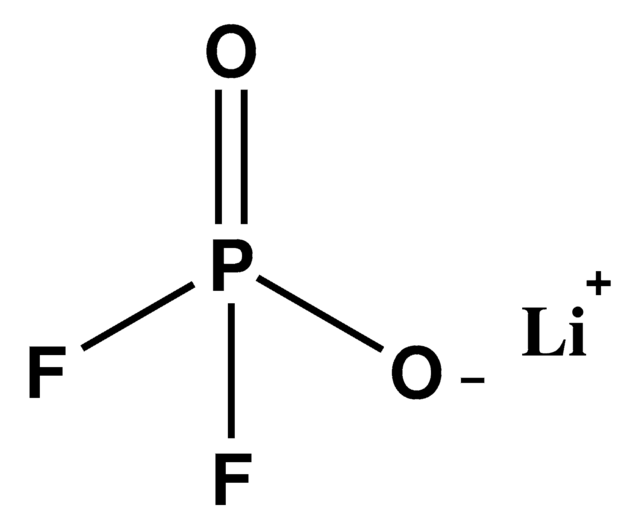935832
Lithium bis(fluorosulfonyl)imide
99.9% trace metals basis, battery grade
Synonyme(s) :
"Imidodisulfuryl fluoride, lithium salt", Ionel LF 101, LiFSI, Lithium bis(fluorosulfonyl)amide, Lithium bis(fluorosulfonyl)imido, Lithium imidodisulfuryl fluoride
About This Item
Produits recommandés
Qualité
battery grade
Niveau de qualité
Description
Application: Battery manufacturing
Pureté
99.9% trace metals basis
Forme
powder
Caractéristiques du produit alternatif plus écologique
Design for Energy Efficiency
Learn more about the Principles of Green Chemistry.
sustainability
Greener Alternative Product
Pf
140 °C
Traces d'anions
chloride (Cl-): ≤5 ppm
sulfate (SO42-): ≤10 ppm
Traces de cations
K: ≤10 ppm
Na: ≤5 ppm
Application(s)
battery manufacturing
Autre catégorie plus écologique
Chaîne SMILES
FS([N-]S(F)(=O)=O)(=O)=O.[Li+]
InChI
1S/F2NO4S2.Li/c1-8(4,5)3-9(2,6)7;/q-1;+1
Clé InChI
VDVLPSWVDYJFRW-UHFFFAOYSA-N
Vous recherchez des produits similaires ? Visite Guide de comparaison des produits
Catégories apparentées
Description générale
Application
Produit(s) apparenté(s)
Mention d'avertissement
Danger
Mentions de danger
Conseils de prudence
Classification des risques
Acute Tox. 4 Oral - Eye Dam. 1 - Muta. 2 - Skin Irrit. 2
Code de la classe de stockage
11 - Combustible Solids
Classe de danger pour l'eau (WGK)
WGK 3
Point d'éclair (°F)
Not applicable
Point d'éclair (°C)
Not applicable
Certificats d'analyse (COA)
Recherchez un Certificats d'analyse (COA) en saisissant le numéro de lot du produit. Les numéros de lot figurent sur l'étiquette du produit après les mots "Lot" ou "Batch".
Déjà en possession de ce produit ?
Retrouvez la documentation relative aux produits que vous avez récemment achetés dans la Bibliothèque de documents.
Notre équipe de scientifiques dispose d'une expérience dans tous les secteurs de la recherche, notamment en sciences de la vie, science des matériaux, synthèse chimique, chromatographie, analyse et dans de nombreux autres domaines..
Contacter notre Service technique









